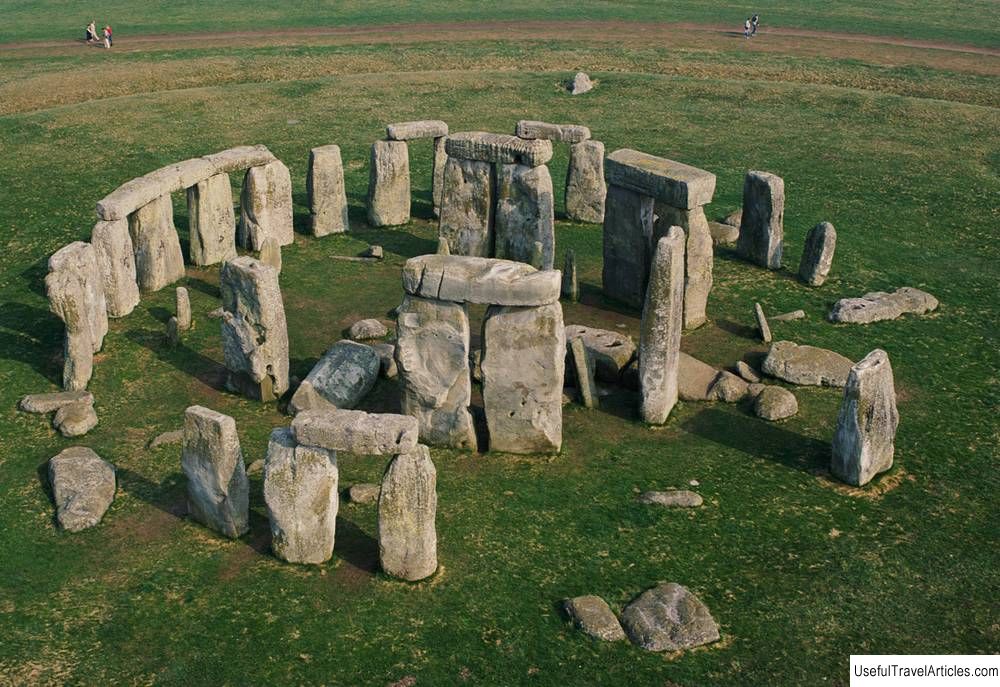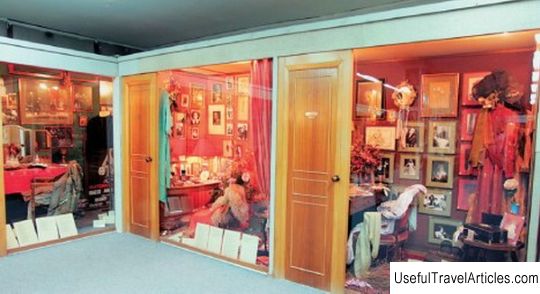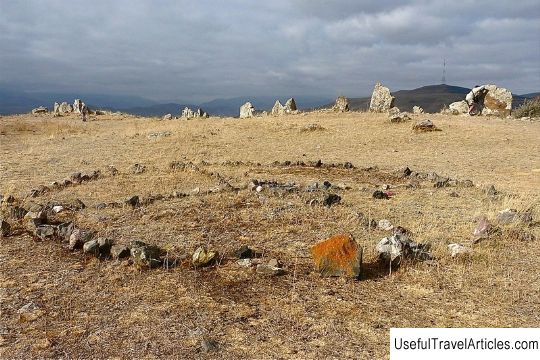Stonehenge description and photos - Great Britain: England
Rating: 8,2/10 (4869 votes) 
Stonehenge description and photos - Great Britain: England. Detailed information about the attraction. Description, photographs and a map showing the nearest significant objects. The title in English is Stonehenge. Photo and descriptionStonehenge is a megalithic structure located on the Salisbury Plain in England. This is probably the most famous megalithic monument of this kind in the world. Similar structures, which are several vertical elongated stones (menhirs) located in a circle or in a spiral, can be found throughout Europe, the Caucasus and other parts of the world. In the same Great Britain and Ireland, such cromlechs are far from uncommon. And the theory is quite probable that on the territory of Britain these cromlechs were a single system. Stonehenge StonesStonehenge is an area about a hundred meters in diameter, surrounded by a moat and an earthen rampart. In the center is the Altar Stone - a multi-ton monolith made of sandstone. It is surrounded by five pairs of stones with lintels at the top (triliths), set in a horseshoe shape and opening to the northeast. At the base of the horseshoe are the tallest stones; towards the ends of the horseshoe, their height decreases. The horseshoe is surrounded by a ring of so-called blue stones. They are bluish on chips and turn blue when wet. Further sarsen trilites form a ring 33 meters in diameter. There are 30 such stones in total, an arc of 13 stones has been preserved along with the upper stones. They were installed on the groove and tenon principle. These stones are surrounded by two concentric rows of 30 holes (the so-called Y and Z holes). Closer to the ramparts and the moat is a circle of 56 holes, known as the "Aubrey holes" after the name of the explorer who discovered them. In the south, there is a small entrance, and the main entrance is considered to be the northeast entrance, which opens onto the alley bounded by parallel ditches and ramparts and leading to the Avon River. The so-called "Heel stone" stands on the alley. There is no consensus on the dating of Stonehenge, but many scientists tend to believe that the first stage of construction - the moat and ramparts - should be attributed to ~ 3000 BC, although the earliest traces of human activity at this place date back to 8000 BC Around 2600 BC blue stones are installed. It is noteworthy that the deposit of this stone was discovered quite recently, in 1923. This is the Presley area in southwest Wales, 200 km from Stonehenge. Perhaps the Altar Stone was also brought from there. How they were transported is a separate mystery for archaeologists and historians, who list a variety of technologies: wooden rollers, and sleds, and the method of "walking stones", and the transportation of blocks by water. In the next 200 years, sarsen trilites were installed, the northeastern entrance was widened and an alley was laid. Sanctuary or observatory?The purpose of Stonehenge also remains a mystery. Various versions are being put forward, the most frequent being that this is a sanctuary and a burial place. It is also highly probable that Stonehenge was used as an observatory - it is quite accurately oriented to the Sun and Moon in several directions, which cannot be a simple coincidence. Along with these, there are the most fantastic versions: for example, that Stonehenge is a landing site for alien spaceships, or that these are the ruins of a nuclear power plant of the Atlantean civilization. Tips
         We also recommend reading Museum of Forgeries (Musee de la Contrefacon) description and photos - France: Paris Topic: Stonehenge description and photos - Great Britain: England. |




